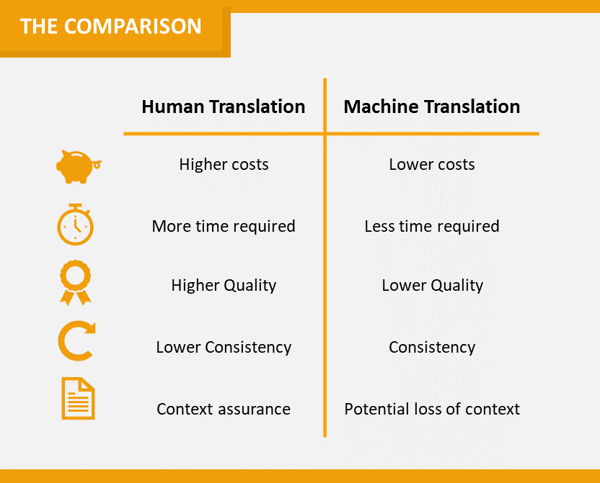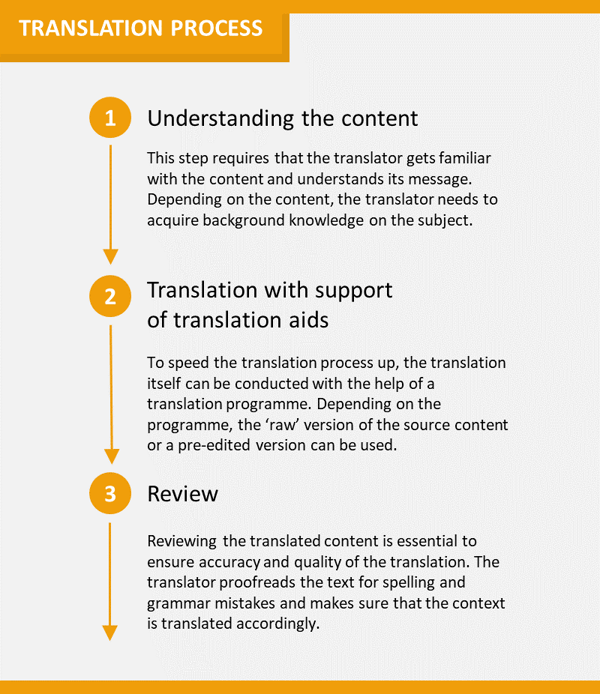When going global with your website, language and translation is unavoidable. What are your company’s choices and what makes for great translation? Let’s discuss some of the key issues you need to have in mind when thinking about going global online. A website that your international prospects can understand and engage with is essential for today’s exporters. Your company’s international websites need to have local content, culture, language and demand preferences, to ensure your company gets found and gets understood. With website translation, localization and a focus on the target audience, misunderstandings can be avoided, and a unique online experience created for your customers:
“Localisation involves many tasks including translation, multilingual project management and software engineering and testing. […] For companies wishing to attract and hold international customers - either through traditional shops, e-business, or a combination multilingual sites and localisation are vital.” Bert Esselink, author of ‘A practical guide to localization’
How can a company achieve high-quality translation adapted to the local market?
In today’s world, there are real choices for translating your website. The translation can be done by humans or through machine translation. In-house translations by employees of the export market, external translation agencies or online programs are all options for translating your website. If you don’t have in-house translation experts, you can outsource it to a huge variety of service providers. Smaller companies with limited resources and knowledge of language and markets, may find using external providers is essential to provide a high-quality content on the website.
HOW DOES THE TRANSLATION PROCESS WORK?
At the outset, there is a fundamental choice: Machine translation or human translation. Machine translation is still evolving as a technology. For the moment the quality of machine translation without human intervention is not sufficient for a high-quality translation. But as machine translation has major advantages for cost and time savings, it can’t be ignored! While the expenditures are higher with human translators, a better quality of the content can be achieved, and a loss of context avoided:
‘Machine translation has proved to be cost effective – but only if the input is controlled, if terminology is standardized, if multilingual output required, if documentation is repetitive and if a restricted language is used for input texts – not all these conditions are necessary, but most have to be present if the application is to be successful.’ John Hutchins, ‘Current commercial machine translation systems and computer-based translation tools’
Another key element for quality is consistency. Human translators tend to use a variety of words instead of sticking to one standard glossary. That lowers the consistency of the translation, which has potential misunderstandings of terms as consequence.
Overview: Human translation vs. machine translation

BEST PRACTICE
Increasingly, the best practice attempts to combine the advantages of both translation options. Acquiring knowledge on the subject, potential pre-editing and proofreading can be conducted by the translator, while the actual translation process is carried out by the software.
A standard model of combining both types can look as follows:

WHAT ARE THE CHALLENGES?
Depending on the content and market conditions, companies face several challenges within the translation process. This counts especially for technical translations with a high complexity. The main challenge of these translations is to find an appropriate translator, who is able to use the right technical terms and measurements. The question whether to consult an internal or external subject specialist or rather a professional translator arises. While professional translators have a high knowledge of foreign languages and translate accurately, the subject specialist has a higher expertise on the topic:
Overview: Professional translator vs. subject specialist

BEST PRACTICE
The goal of the technical translation is to create content that is easily understandable for a subject expert but at the same time sounds natural in the local language. To achieve this goal, two options count as best practice:
- Using a professional translator
The first option represents the translation by a professional translator. But how can you decide who is the right person for your content?
Create a sample text for a short part of the translation, including the most important technical terms. Then, a variety of professional translators can be tested. Afterwards the text can be proofread by a subject expert in your target market (e.g. a retailer or partner of your company) and the best translator can be chosen. This process can be expensive and time consuming the first time but ensures high quality translations for the future and prevents misunderstandings or bad impressions for potential customers.
- Using a subject specialist
When consulting a subject specialist for the translation, the choice should be made after language expertise. The specialist should speak at least two or three foreign languages fluently in order to make an adequate translation.
FURTHER TOOLS:
To make the translation process as simple and consistent as possible further tools can be established and used:
- Guidelines
If the process deviates from the regular translation process, guidelines on the process and other remarks can be established.
- Glossary
To ensure a consistent use of terminologies, a glossary can be set up. The glossary should include correct translation of frequently used or important words. Once established, it can be reworked and extended on a regular basis.
- Translation Database
The database can be used in addition to the glossary. Besides single terms, the database provides previous translations on the subject, definitions and application examples. That makes it easier for the translator to see how terms and sentences have been used before and increases the consistency. Furthermore, articles and existing content on the subject can be provided to increase the background knowledge of the translator.
- Measurements
If your company wants to expand into different markets, with different measurement systems, you need to be aware of these. It is important to know, whether the target market uses the metric system, United States customary system or the imperial system. Furthermore, the conversion should be conducted properly. A list of measurements for each market can be added to the database.
Want to learn more about how to use language successfully within the online internationalization?
 |
References
Archer, J. (2002) Internationalisation, technology and translation, Perspectives: Studies in Translatology
Chidlow, A. et al. (2014) ‘Translation in cross-language international business research: Beyond equivalence’ Journal of International Business Studies
Esselink, B. (2000): A practical guide to localization. Rev.ed. Amsterdam: John Benjamins
Hejazi, W. and Ma, J. (2011) ‘Gravity, the English language and international business’ The Multinational Business Review
Hutchins, J. (2005) ‘Current commercial machine translation systems and computer based translation tools: system types and their uses’ International Journal of Translation
Kaliyan, S. and Kasi Rao, V. (1993) ‘Information Dissemination through Document Translation: Subject Specialist or Translator?’
Peel, M. J. and Eckart, H. (1997) ‘Export and language barriers in the Welsh SME sector’ Small Business and Enterprise Development
Piekkari, R. et al. (2013) ‘Translation behaviour: An exploratory study within a service Multinational’ International Business Review
Welch D.E. and Welch L.S. (2018) ‘Coping with multilingualism: Internationalization and the evolution of language strategy’ Global Strategy Journal
